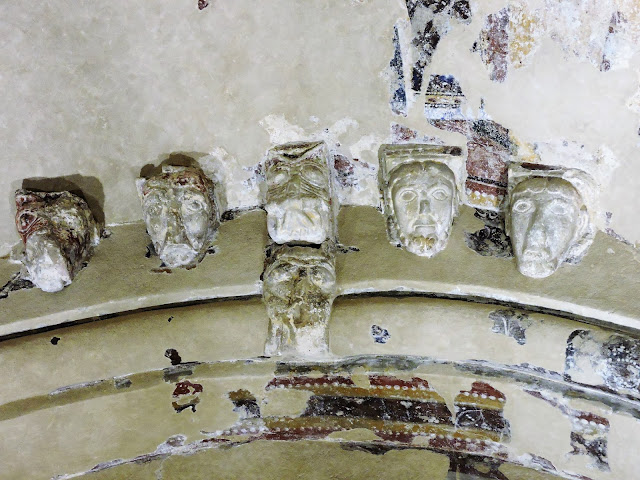Travel Tuesday
Our World Tuesday
Image-in-ing
My Corner of the World
September 2015 - Cashel Ireland
As we approach it.
Why is there always scaffolding when I visit landmarks????
See the small people?
Click here for details of our day that included Rock of Cashel. And here for a mural.
The Rock of Cashel (Irish: Carraig Phádraig), also known as Cashel of the Kings and St. Patrick's Rock, is a historic site located at Cashel, County Tipperary, Ireland.
.
According to local mythology, the Rock of Cashel originated in the Devil's Bit, a mountain 20 miles (30 km) north of Cashel when St. Patrick banished Satan from a cave, resulting in the Rock's landing in Cashel. Cashel is reputed to be the site of the conversion of the King of Munster by St. Patrick in the 5th century.
My favourite photo, taken by John.
.
The Rock of Cashel was the traditional seat of the kings of Munster for several hundred years prior to the Norman invasion. In 1101, the King of Munster, Muirchertach Ua Briain, donated his fortress on the Rock to the Church. The picturesque complex has a character of its own and is one of the most remarkable collections of Celtic art and medieval architecture to be found anywhere in Europe Few remnants of the early structures survive; the majority of buildings on the current site date from the 12th and 13th centuries.
The oldest and tallest of the buildings is the well preserved round tower (28 metres, or 90 feet), dating from c.1100. Its entrance is 12 feet from the ground, necessitated by a shallow foundation (about 3 feet) typical of round towers. The tower was built using the dry stone method. Modern conservationists have filled in some of the tower with mortar for safety reasons.
The Cathedral, built between 1235 and 1270, is an aisleless building of cruciform plan, having a central tower and terminating westwards in a massive residential castle. The Hall of the Vicars Choral was built in the fifteenth century.
Another building from this period is Cormac’s Chapel, which was built in the Romanesque style. Amongst other things, this chapel is notable for its frescoes, the oldest and most important in Ireland, as well as a sarcophagus containing the remains either of Cormac himself, or of his brother’s. Many of the frescoes were damaged by the sandstone becoming waterlogged. To preserve the frescoes, a massive conservation effort was undertaken in which the entire chapel was covered and sealed and dehumidifiers were used to extract the moisture from inside the stones.































Thanks for the tour. What a cool castle -- I really need to visit Ireland one of these days ... when things calm down. :)
ReplyDeleteI've had that scaffolding-type issue happen to me too. It just means you have to go back!
Shame about the scaffolding but an impressive building all the same! #TravelTuesday
ReplyDeleteWe visited this castle 2 years ago - absolutely loved it! We were supposed to return to Ireland in June, but for now those plans are on hold. My daughter drew a digital rendition of this castle for our album cover, so this place is even more special to me.
ReplyDelete...it's a amazing that this treasure is in as good condition as it is! They may be working on this sometime to come. Thank Jackie for the visit, stay safe and healthy.
ReplyDeleteThese Irish sites are perfect for this day and oh, how I'd love to see them in person! Take care, Jackie, and thanks for stopping by today. Stay well.
ReplyDeleteWow I love all of the photos...what an amazing place to see in person...haha I thought that the scaffolding only happened to me! Great pictures regardless!
ReplyDeleteFabulous shots of these treasures!
ReplyDeleteScaffolding aside, your photos are fabulous! I love castles so these are extra awesome to me :)
ReplyDeleteThanks for your contribution to 'My Corner of the World' this week!
My Corner of the World